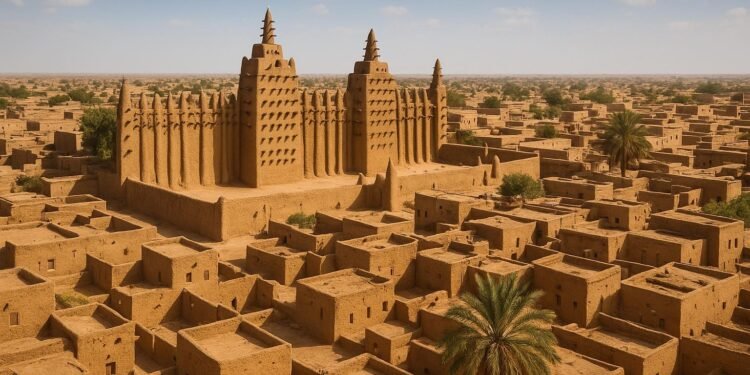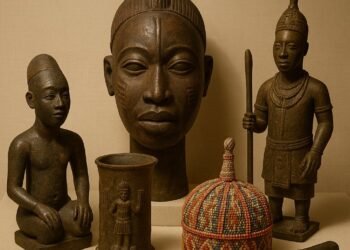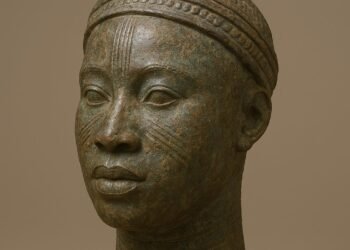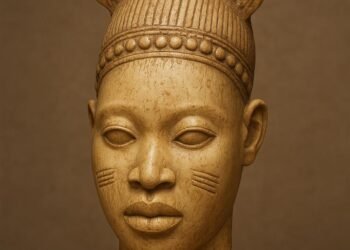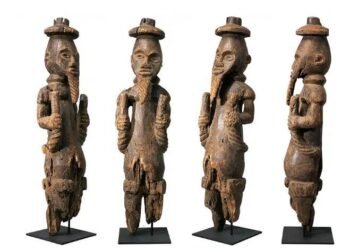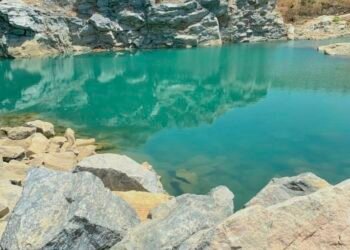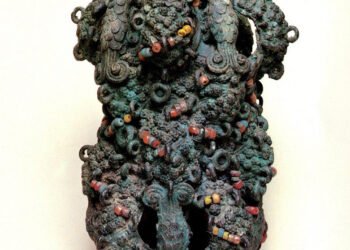The Legacy of Timbuktu: Africa’s Ancient Trade and Knowledge Center
Timbuktu had long existed in the Western imagination as a symbol of the unattainable. Mythic city, child of the Sahara Desert, however, was not mythic at all.
Where the Niger River and the trans-Saharan caravan roads converged, Timbuktu began as a Tuareg camp that evolved into a vibrant hub of commerce and learning.
Its past is one of the glories of the ages, when pupils and merchants forged a legacy above the horrors of the deserts.
With its scrolled antiquities and architectural monuments, Timbuktu was the intellectual and cultural exchange center of Africa’s golden age. This is not a lost-golden-age ancient tale, but a living one of survival and preservation in the face of adversity today.
Table of Contents
The History of Timbuktu
Before it became world famous as a hub of trade and scholarship, Timbuktu was a mere stopover for Tuareg nomads and camel caravans.
Read Also: Itaakpa Rock Shelter: Unveiling Nigeria’s Ancient Past
In the 12th century, these desert nomads built a temporary encampment at the point where the Sahara Desert sands meet the Niger River, marking the beginning of its course. There is a curious piece of information about Timbuktu itself: its name is a tribute to its history; its being named “Tim,” meaning “place,” and “Buktu,” a woman who guarded the camp. Others tell us that it originated from words describing the region’s dunes.
Its strategic position, where rivers and desert trade routes met, distinguished this small village. As a result, the first temporary campsite quickly became a permanent trade post and drew the attention of the rising Mali Kingdom.
The 1300s saw Timbuktu come under the control of this mighty kingdom, paving the way for its remarkable transformation from a modest meeting place to a great African city.
Timbuktu’s Golden Age in the Mali Empire
Timbuktu evolved from a small trading center to a thriving commercial and cultural hub, particularly during its years under the Mali Empire. A significant portion of the credit for this can be attributed to Mansa Musa, one of the most renowned kings in African history.
Ever since his fabled Hajj pilgrimage to Mecca in 1324, he had returned not only with his pocket slightly heavier than usual with gold coins but with a vision for a seat of Islamic learning to rival the world’s best in the city. Among his most ambitious projects was the commissioning of the building of the Djinguereber Mosque, an architectural masterpiece and the religious heartbeat of the city.
However, he did not restrict himself to construction; he went out of his way to hire scholars, poets, and architects from all over the Muslim world and provided them with well-paying, comfortable work. This conscious focus on creating intellectual capital, coupled with the city’s booming gold and salt trade, created a unique context in which business fueled learning, goading business.
Over time, Timbuktu became synonymous with the love of learning, just as it was with the love of wealth. Thus, its golden age as a center of civilization in medieval Africa unfolded.
Timbuktu’s Famous Mosques
Djinguereber, Sankore, and Sidi Yahia give the city its look. Built ages ago, they show off the Sudano-Sahelian style with their mud brick walls and wooden beams.
These beams aren’t just for show; they help repair the mosques each year after the rains. The Djinguereber Mosque was constructed by Mansa Musa, and the Sankore Mosque aligns with the stars, resembling the design of Mecca. Both were important places for religion and learning.
Read Also: Discover the Mystical Nsude Pyramid Shrines Today
These mosques demonstrate the remarkable construction capabilities of people in the desert, creating beautiful and meaningful places. They still remind everyone of Timbuktu’s glory days of education and religion.
Sankore University and the Culture of Learning
Timbuktu’s best years for smarts centered on Sankore University. It grew out of the Sankore Mosque and became one of the most renowned learning spots of its time. It had around 25,000 students, each studying with their own teacher. They didn’t just learn about religion, but also stuff like space, math, medicine, law, and even how to argue well.
What made it special was the collection of handwritten books. Students and teachers all helped make and keep them safe. Written mostly in Arabic, but also in local languages using Arabic script, these books covered a wide range of topics, from treating illnesses to observing the stars. The university wasn’t run by a single person, but it still maintained high standards. Its graduates were well-known judges, doctors, and scholars all around Africa and other parts of the world.
The Manuscript Tradition
Timbuktu’s ancient writings are among its most treasured possessions. There are tons of them; we’re talking hundreds of thousands! They’re about all sorts of stuff like science, ideas, poems, and how to run things. People carefully copied them out and made them look nice with fancy writing and notes in the margins. These writings were kept in people’s homes and passed down through families, preserving West Africa’s rich history.
The Trading Hub of the Sahara
Timbuktu did well since it was located at the center where all the major Sahara trade routes converged.
The markets were always full, with traders bargaining over fascinating goods. Camels would arrive from the north bearing salt, and gold from the south was a precious commodity in those times.
They also traded ivory, cloth, and precious objects, so Timbuktu was renowned for its wealth. Consequently, the booming commerce in the city’s economy enabled it to build good buildings and schools.
Education and books were sponsored by rich merchants, which helped transform Timbuktu into a special desert city where money and knowledge coexisted. As a result, it became an oasis of the Sahara.
The Slow Fading of a Great City
Timbuktu, once a great city, saw its golden days come to an end rapidly back in 1591. A Moroccan army unit arrived with guns and took control.
They believed the smart people in the city posed a problem, so they arrested or expelled many of them. This pretty much killed the amazing learning scene that Timbuktu was known for.
Around the same time, world trade moved to routes across the Atlantic Ocean, bypassing the Sahara. As a result, Timbuktu lost much of its importance for business.
The city endured for centuries after, but when the French took over, things worsened for its culture. Families hid old writings to preserve their history. Sadly, a great deal of knowledge was lost during this long and difficult time.
Read Also: The Majestic Ancient Kano City Walls: A Historical Icon
Recent Preservation Efforts
Lately, people are making a concerted effort to save Timbuktu’s history.
Groups like SAVAMA-DCI have been busy saving thousands of old writings by scanning and restoring them. Back in 2012, when things got rough during the Mali War, people risked everything to sneak hundreds of thousands of these documents to a safe spot. This way, everyone can still learn from Timbuktu’s historical stuff.
Timbuktu is a testament to its own great past
UNESCO recognizes it by naming it a World Heritage Site.
The city does have real problems, including desertification and regional conflicts in northern Mali. However, Timbuktu’s story continues. Tourists still visit there to see the old mosques and learn about efforts to preserve its historical manuscripts.
Natives are collaborating with foreign organizations to preserve these books, which represent the city’s former prominence. Though no longer the center of learning, Timbuktu reminds us of the perpetual nature of culture and knowledge.
Timbuktu: A Story of Bouncing Back
The past of Timbuktu is one of growth, decline, and revival. It began as a simple nomad camp and grew to become the biggest hub of knowledge and trade, a force to be reckoned with in the global scene. Its ancient books, mosques, and markets signal the power of ideas and the importance of preserving our shared heritage. People are attempting to save what can be saved of Timbuktu, and this effort continues to inspire Africa and the world.
